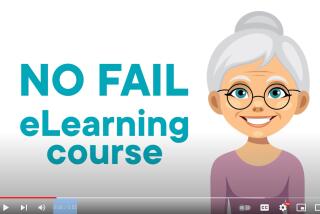Exit Exam Flimflam
The California High School Exit Exam is a house of cards that’s about to collapse on 100,000 students. Beginning in 2006, no student will receive a public high school diploma without having passed that test. The state’s theory behind the exam is that threatening to deny diplomas, even to students who have passed all their courses, will motivate schools to teach better and students to study harder.
Here are some problems with this theory of magical motivation:
* There is no evidence that such threats work. The experts charged with evaluating the test point to recent (small) improvements in scores, but there is no way they can attribute these improvements to the test threat. Further, many thoughtful teachers believe that the threat distracts from real learning and can even encourage students to drop out.
* The test covers information the state says students “should” know, even though it may not have been covered in their schools. Part of the plan is that schools will identify students who need help and provide them with the extra opportunities and attention to pass the test. Surely this happens some of the time. But “remediation” is rarely a fair alternative to skilled instruction the first time.
* It’s indecent to punish students for adults’ failures to provide adequate opportunities to learn, yet the recently settled Williams vs. California case documents unconscionable schooling inadequacies (undertrained teachers, poor facilities, insufficient books) in schools serving primarily low-income, minority communities across California.
It may occur to you that you’ve heard these arguments before. Didn’t we already settle this exit exam business? Sort of. Two years ago, the state was on the verge of making 2004 the “drop dead” year for passing the exam. But it became clear that educational chaos and human catastrophes were in the making. So the test penalty was postponed until 2006.
Yet structural problems still undermine learning in many California schools. For example, in Los Angeles County, 45 high schools experience at least two of these three fundamental opportunity problems:
* Serious shortages of qualified teachers (more than 20% not certified by the state).
* Overcrowded facilities that house twice as many students as the state recommends.
* Too few courses to allow all students to complete the minimum requirements for California’s four-year public universities.
Do these deficiencies matter? It is not a coincidence that students who attend the 45 inadequate schools (and will have attended such schools for their entire education) fail the test at roughly three times the rate of students attending schools that experience none of the problems.
The recent settlement of the Williams suit promises to address many of these problems. The settlement sets standards for teachers, facilities and learning materials; earmarks new state money so that schools can live up to these standards; and creates ways for community members to learn about school conditions and file complaints when problems arise.
But these needed reforms cannot immediately undo the years of substandard education faced by the class of 2006. The exit exam shifts the blame for education-policy failures onto the shoulders of students who have had the fewest opportunities to benefit from good schooling, and it calls that transfer “accountability.” Denied diplomas will not make up for denied opportunities.
More to Read
Sign up for Essential California
The most important California stories and recommendations in your inbox every morning.
You may occasionally receive promotional content from the Los Angeles Times.









